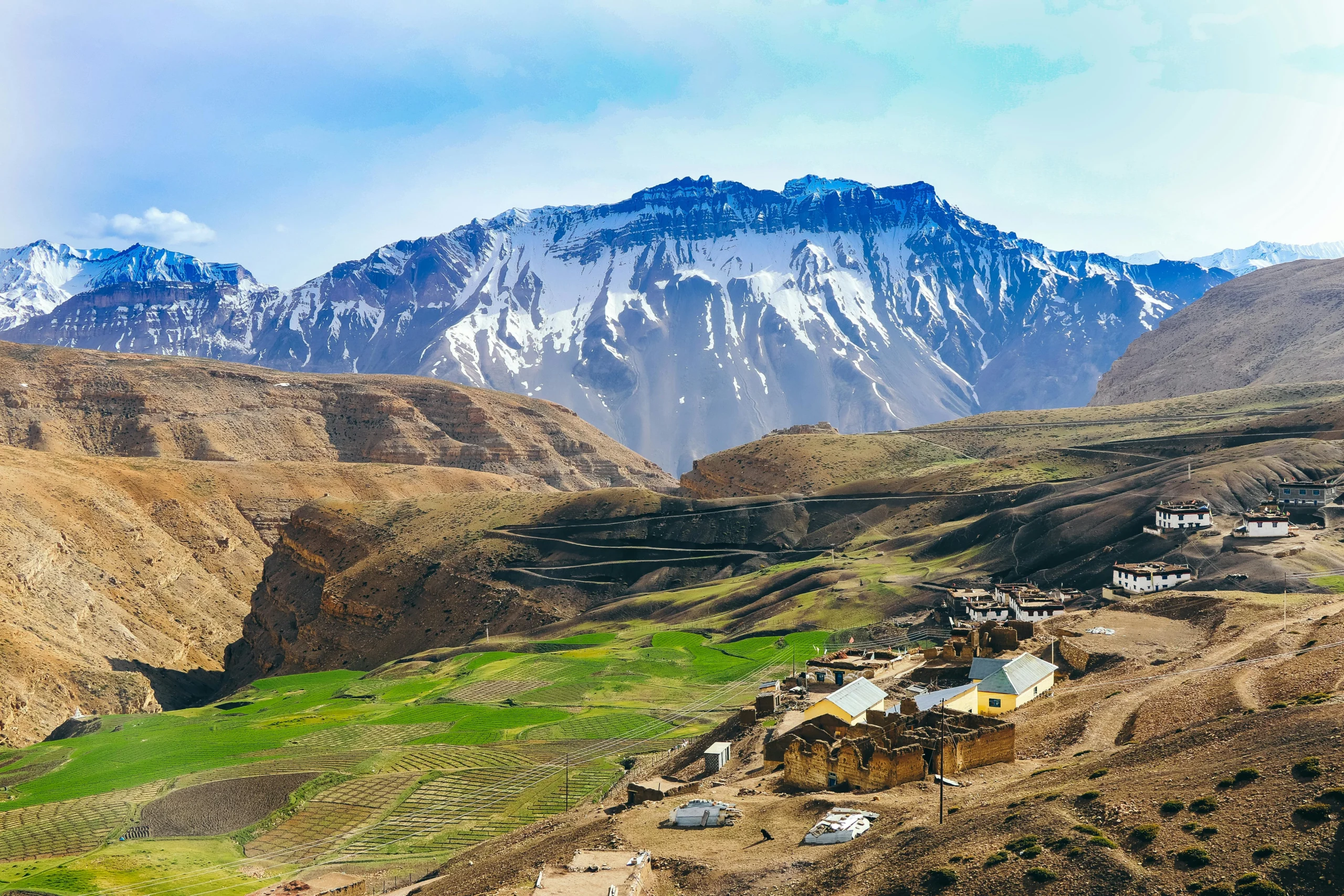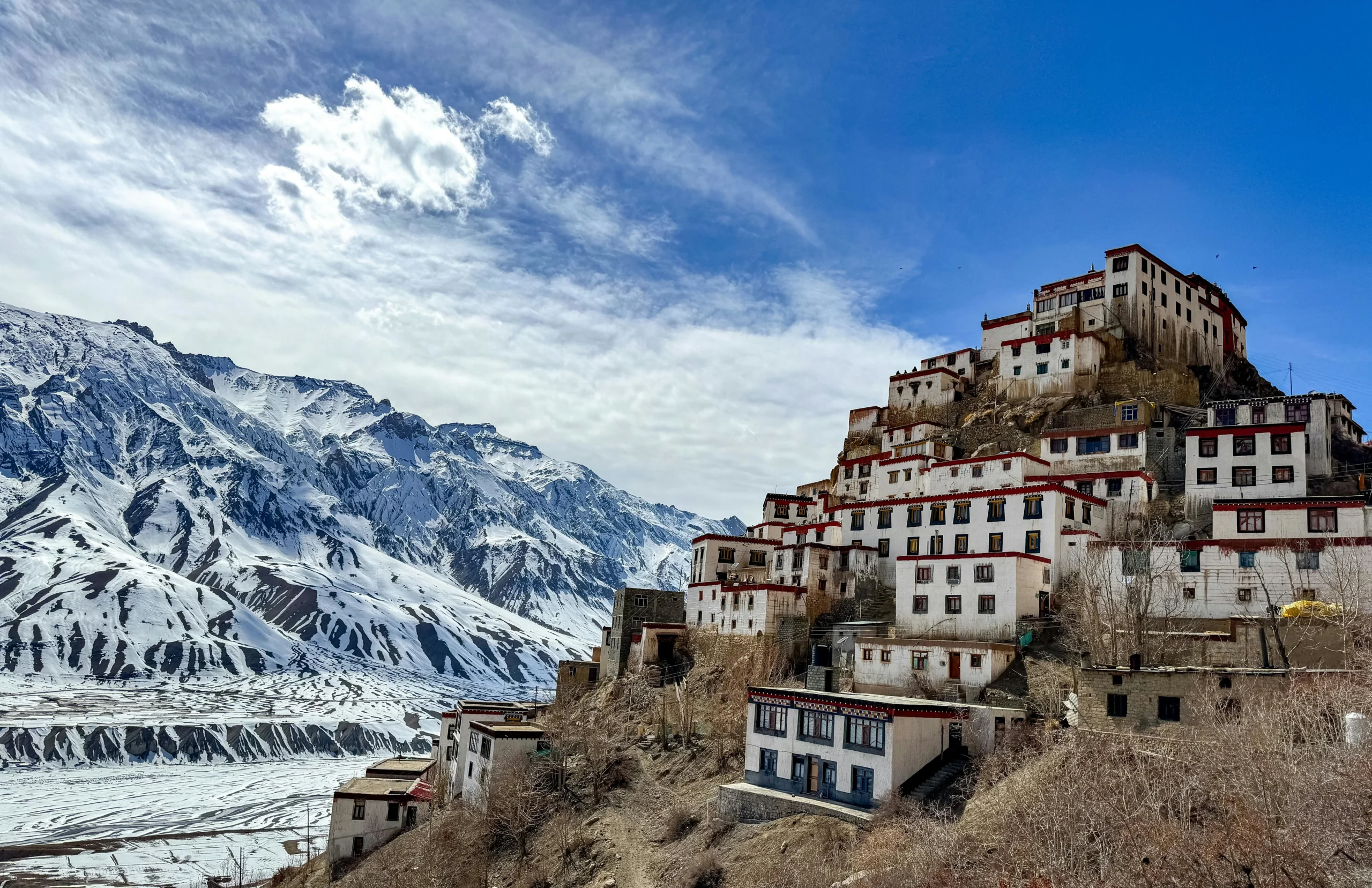Life is short and the world is wide
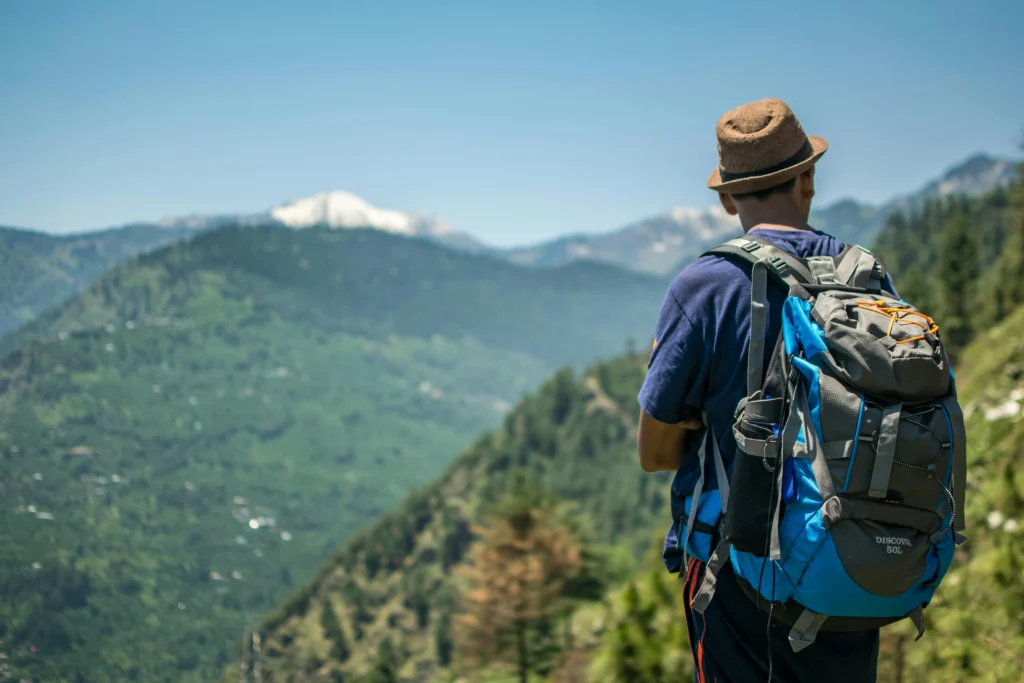
There’s a bend in Himachal where the air starts to feel different – cooler, crisper, quieter. That’s when you know you’re close to Jalori Pass Trek.
This is not a trek where you rush to the top for a photo and head back down. It’s a trail made for pausing, for slow breathing and for noticing the play of sunlight through oak tree leaves. The Jalori Pass Trek is nestled between Shoja and Jibhi in Himachal Pradesh, is one of those rare trek journeys that feels like it was waiting for you only. The jaw dropping view with the cooler wind carries pine scent through the valley. This is Jalori Pass, one of the most beautiful and peaceful treks in the Himachal Pradesh. You’ll hike through sleepy hamlets & deodar lined forests, and reach a quiet ridge that opens up to endless layers of Himalayan peaks.
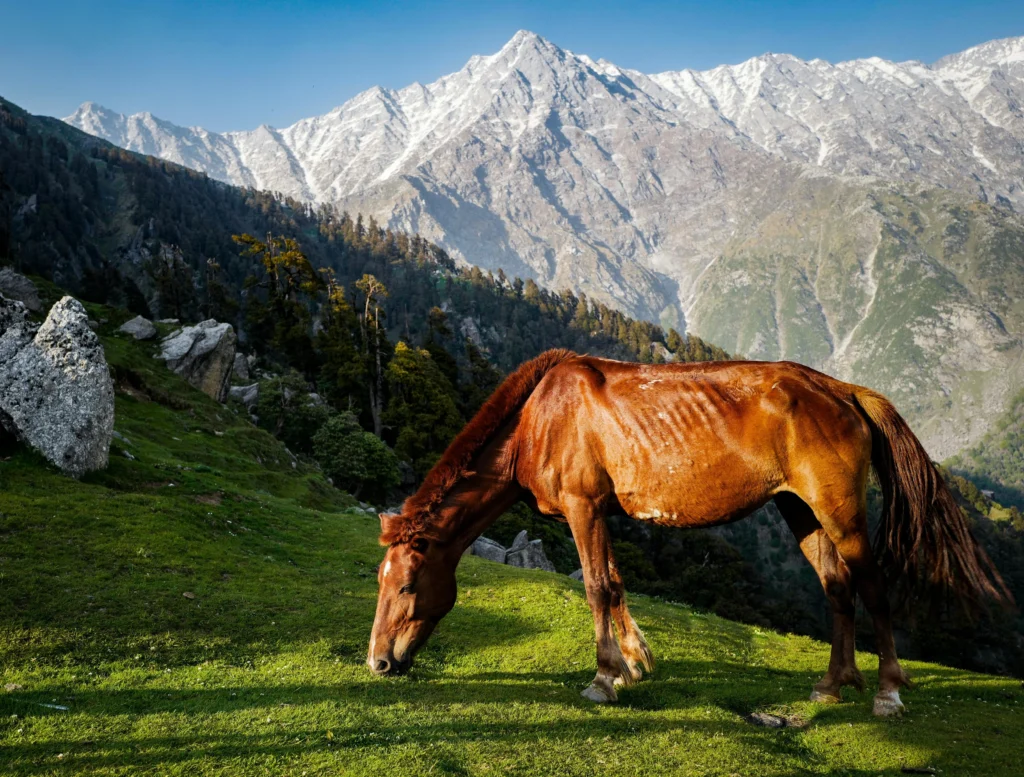
Himachal Pradesh is known for the stunning landscapes, mountains & rivers with deodar forests. Jalori Pass has an altitude of 3,120 meters (10,236 feet), offering breathtaking views and a chance to experience the beauty of the Himalayas mountains range. As for a new person who don`ent know trekking , The Jalori Pass Trek difficulty level is generally rated as easy to moderate, so making it perfect for beginners or anyone who just wants to enjoy the mountains without too much struggle.
Table of Contents
Why You Should Go to Jalori Pass
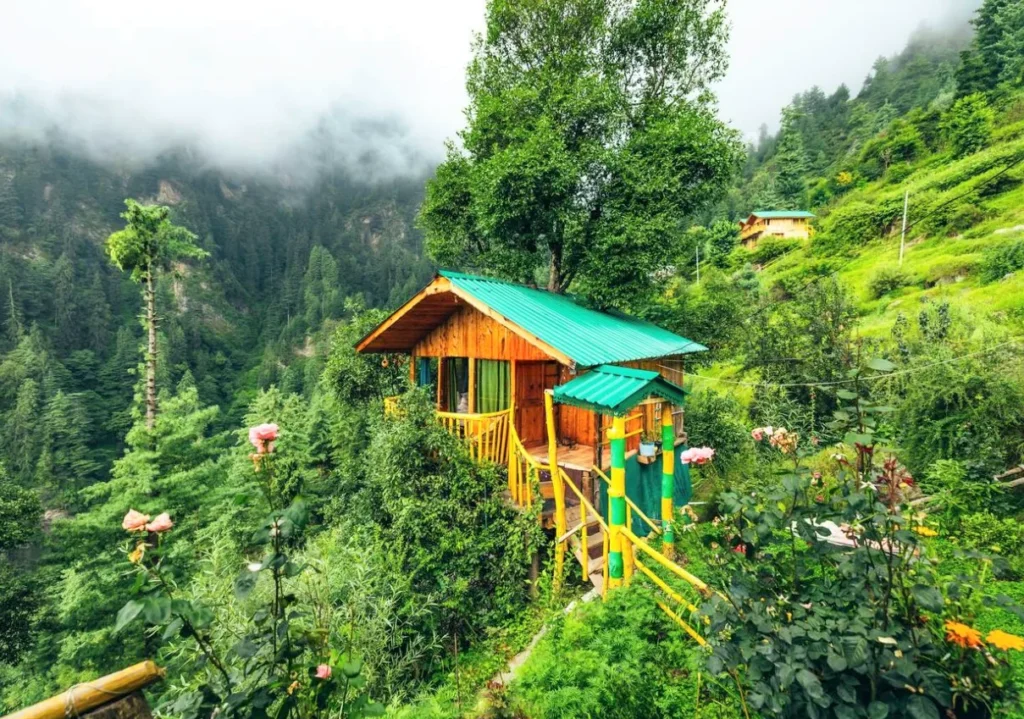
Locally known as Jalori Jot, Jalori Pass is one of those quiet places that doesn’t shout for attention, and that’s exactly its charm. Located about 150 km from Shimla, the drive takes you roughly five hours, but the landscape slowly changes with every turn. By the time you reach, the air is cooler, the pine trees taller, and the noise of city life a distant memory.
The trek typically begins from the peaceful villages of Jibhi or Shoja, both cradled in the hills like they’ve been waiting centuries for someone to notice them. Thesetreks are not for fast travel, they’re for slow mornings, hot chai, and conversation with locals who’ve seen more winters than tourists.
You walk through dense oak and cedar forests, cross little streams, and every so often, the trees part just enough to give you wide-open views of snow-tipped peaks. There’s no rush. No soundtrack but your footsteps and the occasional wind in the trees.
For anyone craving a trek that’s more about connection than conquest Jalori is it.
A Bit of History
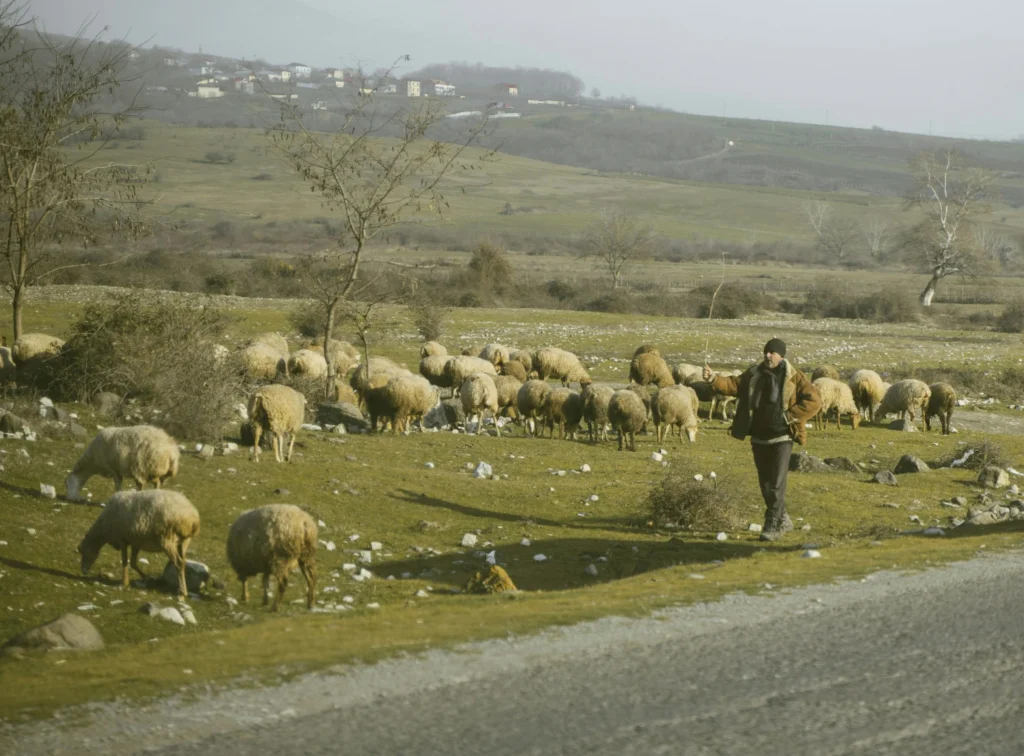
Long before construction of smooth highways and road maps, Jalori Pass was more than just a scenic spot for peoples but it was a lifeline. For centuries, this rugged trail served as a key route for shepherds, traders, and villagers & travellers moving between the Kullu and Shimla districts. Long wool caravans would used to pass through here, carrying salt, grain, and wool across the mountains, guided only by instinct and the weather. It wasn’t just a normal route but it a connection between communities, stories, and survival. Even today, if you walk the trail quietly enough, you might feel the echo & footsteps that once crossed from here in far tougher times.
Starting the Trek: Jibhi & Shoja
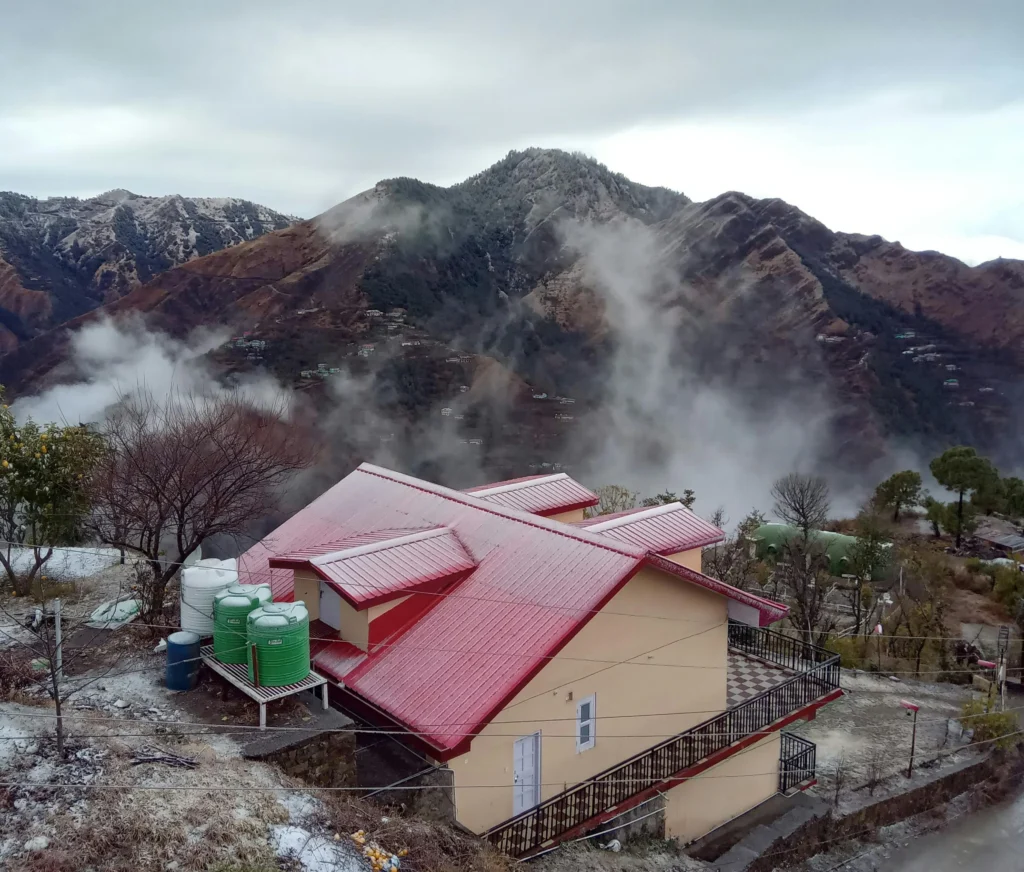
Your journey to Jalori Pass really begins in the quiet hill towns of Jibhi and Shoja two little gems tucked into the forested hills of Himachal. Most trekkers arrive a day early, not just to adjust to the altitude, but to slow down and ease into the rhythm of the mountains. These aren’t places you rush through. They’re meant for slow breakfasts, walks by the river, and evenings around a fire.
Both towns offer plenty of cozy guesthouses and family-run stays, many built in traditional wood-and-stone architecture. If you’re booking through Peaksnbeyond, you’ll get a warm room, local food, and maybe even a view of the pine forests from your window.
Pro tip: Arriving a day early helps your body adjust according to the altitude, especially if you’re coming straight from the plains areas. It can also help to prevent common symptoms like headaches, fatigue, or altitude sickness. so consider that quiet first day an essential part of the journey.
Spend your first day exploring the village, chatting with locals, or taking a short forest walk. If you’re in Shoja, a walk to the nearby waterfall is a peaceful way to stretch your legs before the real trek begins. Jibhi, with its riverside cafes and laid-back vibe, is perfect for travelers who like to journal, read, or simply do nothing for a while.
On trek day, you’ll make your way to Jalori Pass, which is about 11 km from Jibhi and takes 40 to 50 minutes by taxi or local bus. The road winds steadily uphill, passing through forests and sharp turns, until it opens up to the wide, wind-swept saddle of the pass.
Peaksnbeyond can arrange your ride and guide, making sure you start your trek relaxed, well-fed, and ready to follow the trail where the trees begin to thin and the sky feels a little bigger
Jalori Pass: Incredible Views
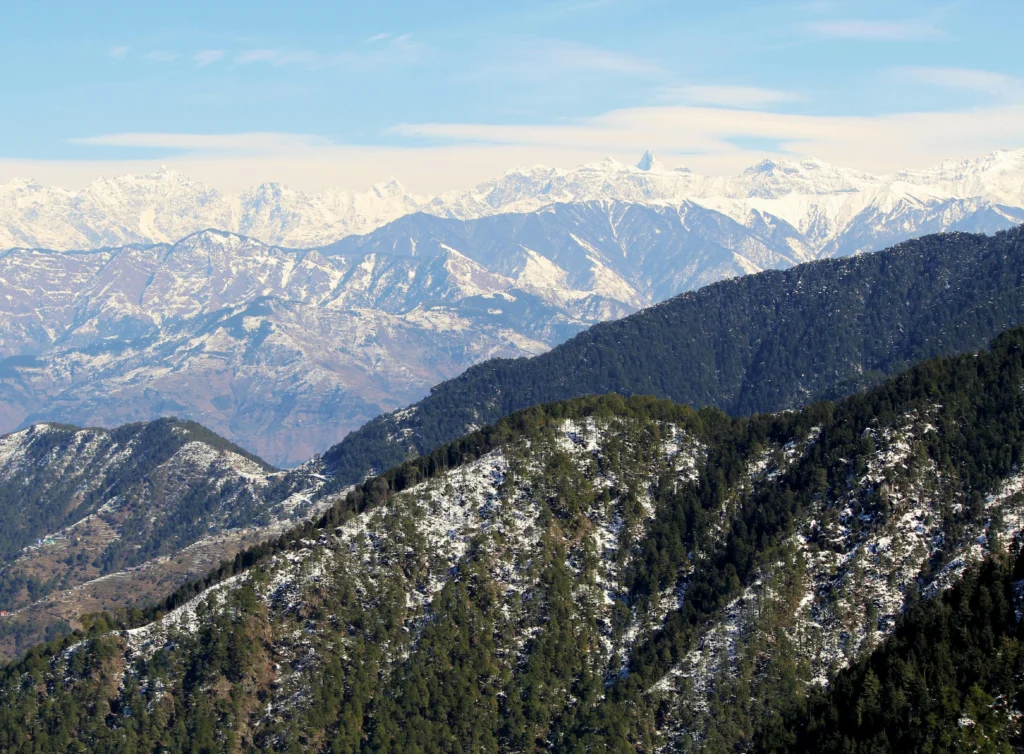
Once you reach the top of Jalori Pass, get ready for some truly amazing nature views. Surrounded with Dhauladhar and Kinnaur mountain ranges, with their tall peaks stretching into the sky. Depending on when you visit, the scenery can be completely different. In winter, everything is covered with the snow and feels like a quiet winter wonderland. In summer, the hills turn green and full of life with magical flower colors. Even on misty days, there’s something magical about standing up there, it’s peaceful, open, and feels far from the busy world below.
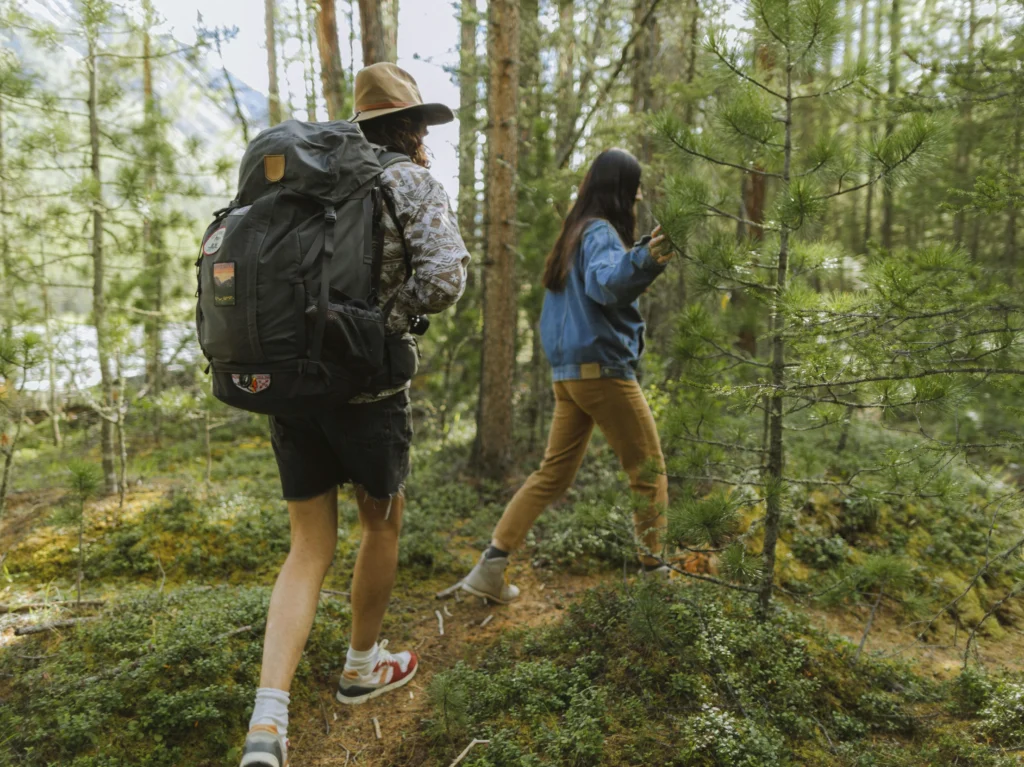
From here, you can start your 5 km trek to Serolsar Lake. It’s a gentle trail that most people can do it in about 2 to 3 hours of time. The walk takes you through thick forests filled with oak, rhododendron, and cedar trees. It honestly feels like walking through a forest from a storybook. If you’re lucky enough to come in spring, the rhododendrons will be in full bloom bright pinks and reds lighting up the path. The air is clean, the forest is quiet, and all you’ll hear is the soft crunch of leaves underfoot and maybe a few birds calling in the distance.
Serolsar Lake: A Sacred Spot
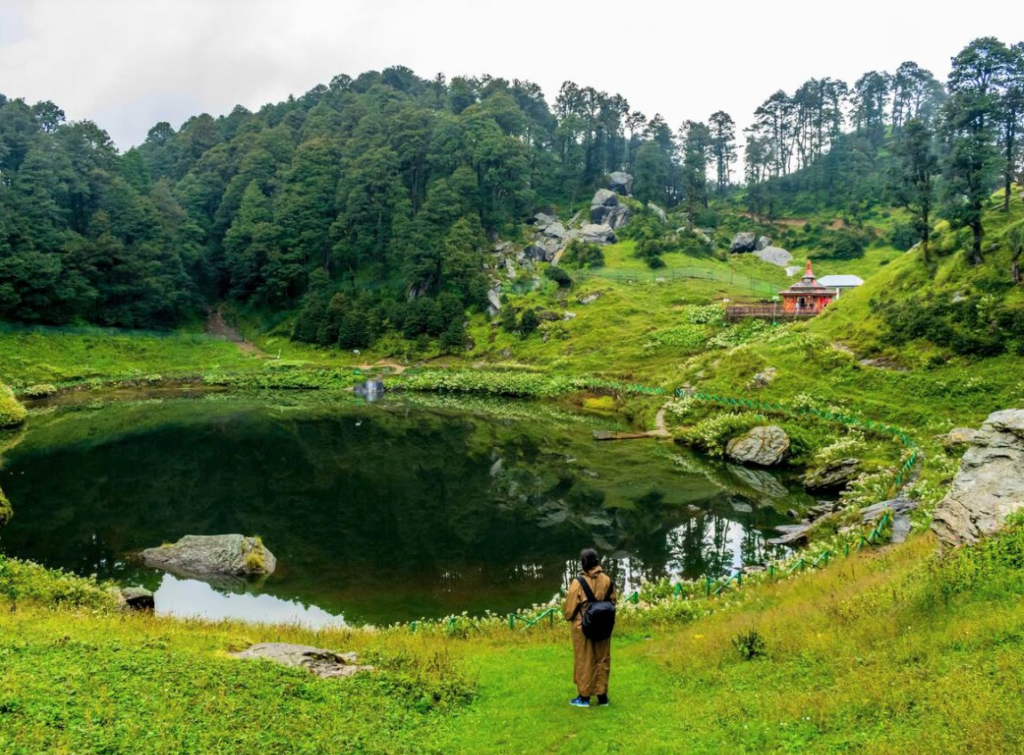
Serolsar Lake not just a scenic spot in the forest but it holds up a deep spiritual meaning for the locals. Surrounded by silence and tall trees, the lake is believed to be sacred. According to a local story passed down for generations, that there was once a demon named Jalandhara who caused great suffering in the region. In response to the villagers’ prayers, Lord Shiva appeared in the form of a serpent and defeated the demon in battle. The story says the demon’s body turned into the nearby mountains, and his blood flowed to form what we now know as Serolsar Lake.
Today ,there is a small temple beside the lake which honors Budhi Nagin, the local goddess and guardian spirit of the waters, along with Lord Shiva. It’s a quiet place as many people stop to offer a prayer or simply a sit in reflection. The water here is said to be pure and it`s so clear that you can often see the lakebed. Locals believe the lake cleans itself naturally even if leaves fall in it, they mysteriously disappear overnight, which keeps the water clean.
Whether you believe the legends or not, it’s hard not to feel a sense of peace while standing by the lake. There’s something about it something calm, ancient, and still that stays with you long after the trek is over.
Raghupur Fort Trek : Stepping Into History
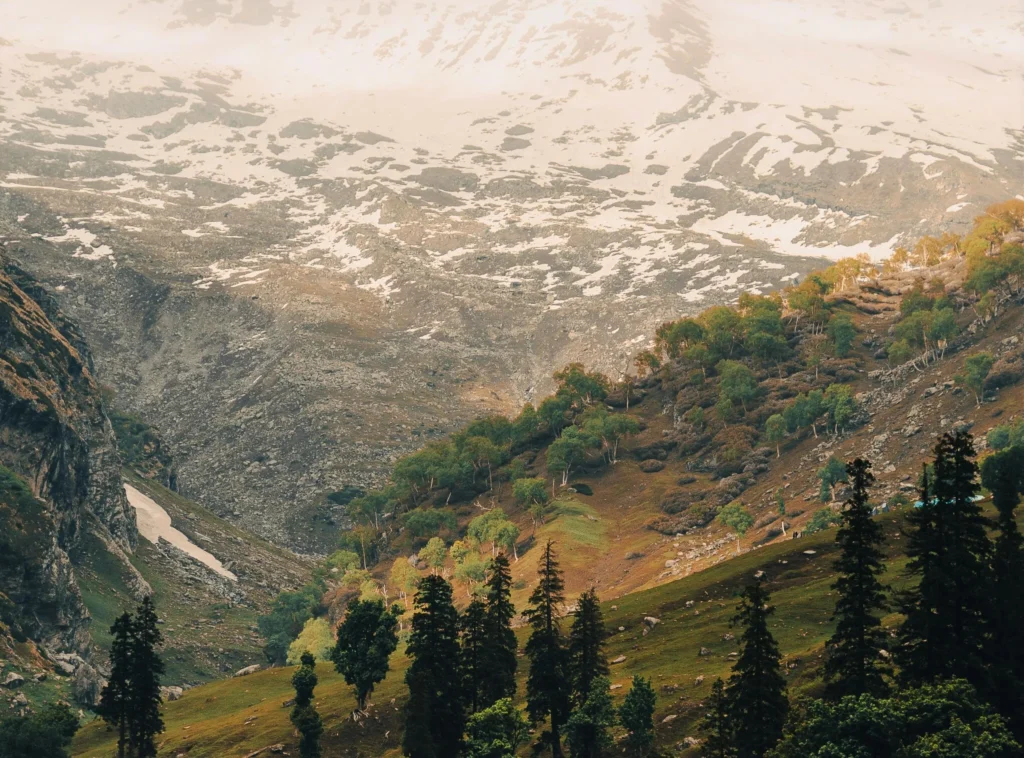
On Day Three, the trail takes you somewhere special at Raghupur Fort. Constructed on the hills, it feels like one of those places lost in time. The trek is just about 3 km from Serolsar Lake, and though it’s a short walk, but packed with quiet a beauty. You pass through tall pine trees, then open into wide grassy meadows that sway in the breeze. If you’re lucky (or early), the whole place might be wrapped in mist and then suddenly, through the fog, the old fort appears. Weathered and quiet, standing alone like it’s been waiting centuries.
Raghupur Fort was built in the 17th century by the rulers of the Mandi. It served as a watchpoint, where guard used to look out across the valleys and keep the kingdom safe. Today, only pieces of the original stone walls remains, but the place still holds a kind of the strength. It’s easy to picture ancient guards leaning against the stones, keeping an eye on the horizon.
Sitting at around 12,000 feet (3,500 meters), the views from the top are incredible. On a clear day, you can see the Dhauladhar Range spread out in the distance sharp, snowy, and impossibly beautiful. The best time to hike here is between April and June or September to November, when the weather is kind and the trail is open. In the winter months, the path can be deep under snow. It’s beautiful, yes but also tricky. If you’re not used to winter trekking, it’s better to skip this one until the snow melts.
If you do make it to Raghupur, don’t rush. Sit for a while. Let the wind brush past you and just be still. This isn’t just another trekking spot it’s a quiet page from Himachal’s past.
The View from Raghupur Fort
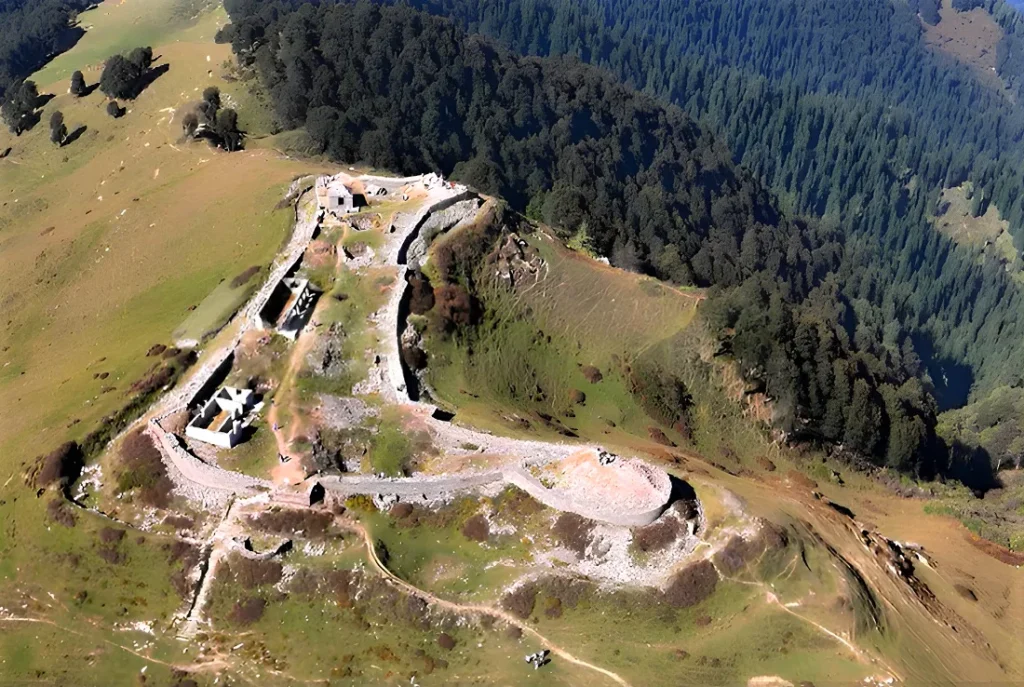
When you finally reach the top of Raghupur Fort, It’s one of those places that asks you to slow down. Stand on the old stone walls, let the breeze hit your face, and just look around. Below you, the green grassland roll out like a blanket, and far in the view, the snow-covered Dhauladhar peaks looks quietly stand as the guard. It’s the kind of view that makes you go still, No photo can really catch it, the feeling of space, of silence, of standing so high up that the sky feels close enough to touch.
From up there, you can see the whole outline of the fort its worn, broken walls now softened by wild grass and time. It’s not grand anymore as time passed but that’s what makes it special. Nature has slowly taken it back, wrapping the green like an old secret. The climb might have left you tired, but this moment? It stays with you. Long after you’ve left, you’ll remember how small and lucky you felt up there.
Some Tips for the Trek
What to Pack
- Warm clothes (layers are best)
- Waterproof jacket and shoes
- Sunscreen and sunglasses
- A good camera to capture the views
- A small backpack and trekking poles (optional, but helpful)
Best Time to Visit Jalori Pass Trek
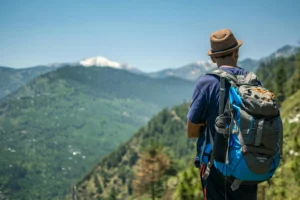



Ready for the Adventure?


If you’re looking for a peaceful and scenic adventure, Jalori Pass Trek is the perfect choice. Whether you’re a beginner or an experienced trekker, this trail offers stunning views, rich history, and a chance to connect with nature.
Book your trek with Peaksnbeyond today and experience the magic of the Himalayas up close.
F.A.Q.
Jalori Pass Trek
Jalori Pass is located in the Kullu district of Himachal Pradesh, between Shoja and Khanag. It sits at an altitude of about 3,120 meters and is one of the most scenic mountain passes in the Himalayas near Manali and Tirthan Valley.
The Jalori Pass Trek difficulty level is generally considered easy to moderate, making it great for beginners and seasoned hikers alike. The trails are well-marked, and the gradual ascent makes it a comfortable trek for most fitness levels.
The trek can range from a short 5–6 km hike (to places like Serolsar Lake) to longer routes depending on the trail you choose. Many people complete it as a day trek from Shoja or Jalori Pass base, but multi-day options are also available for exploring deeper trails.
The Jalori Pass Trek best time to visit is April to June and September to November. These months offer clear skies, pleasant weather, and stunning views of the snow-capped Himalayan peaks and lush alpine meadows.
Expect everything from dense pine and oak forests, panoramic mountain views, to serene spots like Serolsar Lake, Raghupur Fort ruins, and local Himachali villages. In spring, wildflowers bloom across the trail, and in autumn, golden hues take over the forests.
You can drive from Delhi (around 500 km) or Chandigarh (around 270 km) to Shoja or Jibhi, which are the common bases for the trek. The nearest airport is Bhuntar Airport (Kullu), and the closest railhead is Shimla or Joginder Nagar, followed by a road journey.
Yes, camping is allowed, especially near Serolsar Lake and meadows along the route. However, always practice Leave No Trace principles to keep the environment clean and respect local customs.
No, Jalori Pass is usually closed in peak winter (late December to March) due to heavy snowfall. Always check the local weather or forest department updates before planning your trip.
Absolutely. The Jalori Pass Trek is one of the most underrated treks in Himachal Pradesh, combining natural beauty, easy accessibility, peaceful trails, and cultural experiences all without the crowds you’d find on more commercial treks.
Have you been on the Jalori Pass Trek or is it on your bucket list? Let us know your thoughts or any tips you have for fellow trekkers in the comments below


